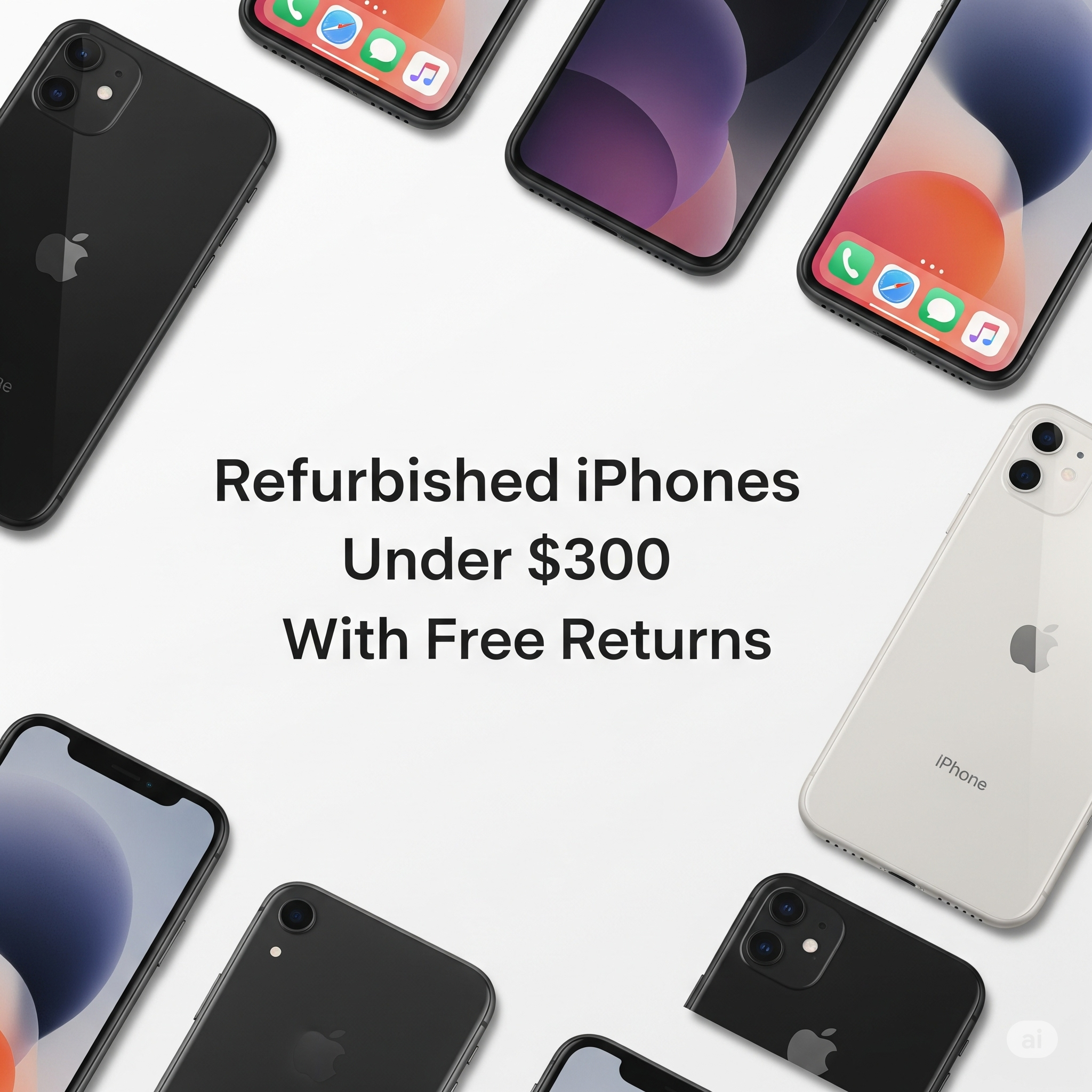Refurbished smartphones have become a significant player in the tech market, offering consumers a cost-effective alternative to brand-new devices. These phones undergo a thorough refurbishment process to restore them to a fully functional state, often including repairs, updates, and quality checks. The benefits of selecting a refurbished iPhone include substantial savings, access to models that may no longer be available new, and a reduced environmental impact. However, common misconceptions about refurbished electronics persist, such as the belief that they are unreliable or severely damaged, which can deter potential buyers.
Overview of Refurbished iPhones Under $300
Refurbished iPhones under $300 typically include older models or those with minor cosmetic blemishes that do not affect performance. Popular models in this price range often include the iPhone 8, iPhone SE (2020), and iPhone XR.
| Model | Release Year | Storage Options | Key Features |
|---|---|---|---|
| iPhone 8 | 2017 | 64GB, 256GB | Touch ID, A11 Bionic Chip, Wireless Charging |
| iPhone SE (2020) | 2020 | 64GB, 128GB, 256GB | A13 Bionic Chip, Compact Design, Excellent Camera |
| iPhone XR | 2018 | 64GB, 128GB, 256GB | Liquid Retina Display, A12 Bionic Chip, Face ID |
The price of refurbished iPhones is influenced by several factors, including the model’s age, storage capacity, physical condition, and market demand. As technology advances, older models depreciate, allowing for significant discounts on refurbished devices.
Evaluating Quality in Refurbished iPhones
Refurbished iPhones are graded based on their condition, typically classified as A, B, or C. Grade A devices appear nearly new with minimal signs of wear, while Grade B devices may show some cosmetic imperfections. Grade C devices may have noticeable scratches or dents but are still fully functional.
The quality assessment of refurbished iPhones involves rigorous testing of hardware components, battery health, and software functionality. To ensure you are purchasing a high-quality refurbished device, consider the following tips:
- Check the grading information provided by the seller.
- Look for warranties or guarantees offered on the device.
- Read customer reviews regarding the seller’s reliability and product quality.
Understanding the Return Policy
A free return policy is crucial when buying refurbished products, providing buyers with peace of mind. Standard return periods generally range from 14 to 30 days, depending on the retailer.
When comparing return policies, consider the following points:
- Length of the return window offered by different retailers.
- Conditions under which a return is accepted.
- Whether the return shipping is free or if there are restocking fees.
Where to Buy Refurbished iPhones
Several reputable websites and stores sell refurbished iPhones, ensuring buyers access to quality products at competitive prices. Notable platforms include Apple’s certified refurbished store, Amazon Renewed, and Swappa.
Below is a list of top-rated platforms and their unique selling points:
- Apple Certified Refurbished: Offers genuine Apple devices with a full warranty.
- Amazon Renewed: Provides a broad selection with customer reviews and guarantees.
- Swappa: Features user-to-user sales with detailed listings and seller ratings.
Additionally, warranty offerings vary among sellers, with some providing limited warranties while others may offer extended options.
Customer Reviews and Experiences
Customer reviews play a vital role in influencing purchase decisions, as they provide insight into the performance and reliability of refurbished iPhones. Many users highlight their satisfaction with the value received for their money.
Key points from customer testimonials often include:
- Positive experiences with device performance and functionality.
- Surprisingly minimal signs of wear on Grade A devices.
- Concerns about battery life in some older models.
Common pros and cons mentioned by users include:
- Pros: Cost savings, similar performance to new models, eco-friendly choice.
- Cons: Potential battery issues, limited availability of certain models.
Tips for Maintaining Refurbished iPhones
Maintaining a refurbished iPhone is essential for prolonging its lifespan and ensuring optimal performance. Best practices include:
- Regularly updating the software to the latest version.
- Using a protective case and screen protector to prevent physical damage.
- Cleaning the device gently to prevent dust buildup, especially around ports.
The importance of software updates cannot be overstated; they provide vital security patches that protect against vulnerabilities. Additionally, accessories like high-quality charging cables and portable power banks can enhance the longevity of refurbished devices.
Troubleshooting Common Issues, Refurbished iPhones Under 0 With Free Returns
Refurbished iPhone users may encounter common problems such as battery drain, connectivity issues, or software glitches. Troubleshooting steps for resolving these issues often include:
- Restarting the device to refresh system processes.
- Checking for software updates to ensure the device is running the latest version.
- Resetting network settings to resolve connectivity issues.
Here’s a table listing common issues alongside their solutions:
| Common Issue | Solution |
|---|---|
| Battery drains quickly | Check battery health in settings, close unused apps, and disable background app refresh. |
| Wi-Fi connectivity problems | Reset network settings and ensure Wi-Fi is enabled. |
| Software glitches | Restart the device and update to the latest software version. |
Future of Refurbished Electronics Market
The refurbished smartphone market is experiencing significant growth due to increasing environmental awareness and the demand for affordable technology. As sustainable practices gain traction, consumers are more likely to consider refurbished devices as a viable option.
The impact of these trends is evident, with predictions indicating a continued rise in the refurbished electronics industry. By 2025, the market is expected to expand substantially, driven by advancements in refurbishment processes and consumer acceptance. This growth not only reflects economic considerations but also a commitment to reducing electronic waste and promoting sustainability in technology consumption.



